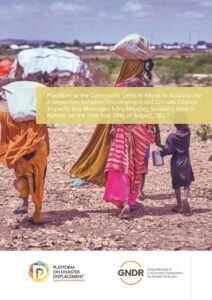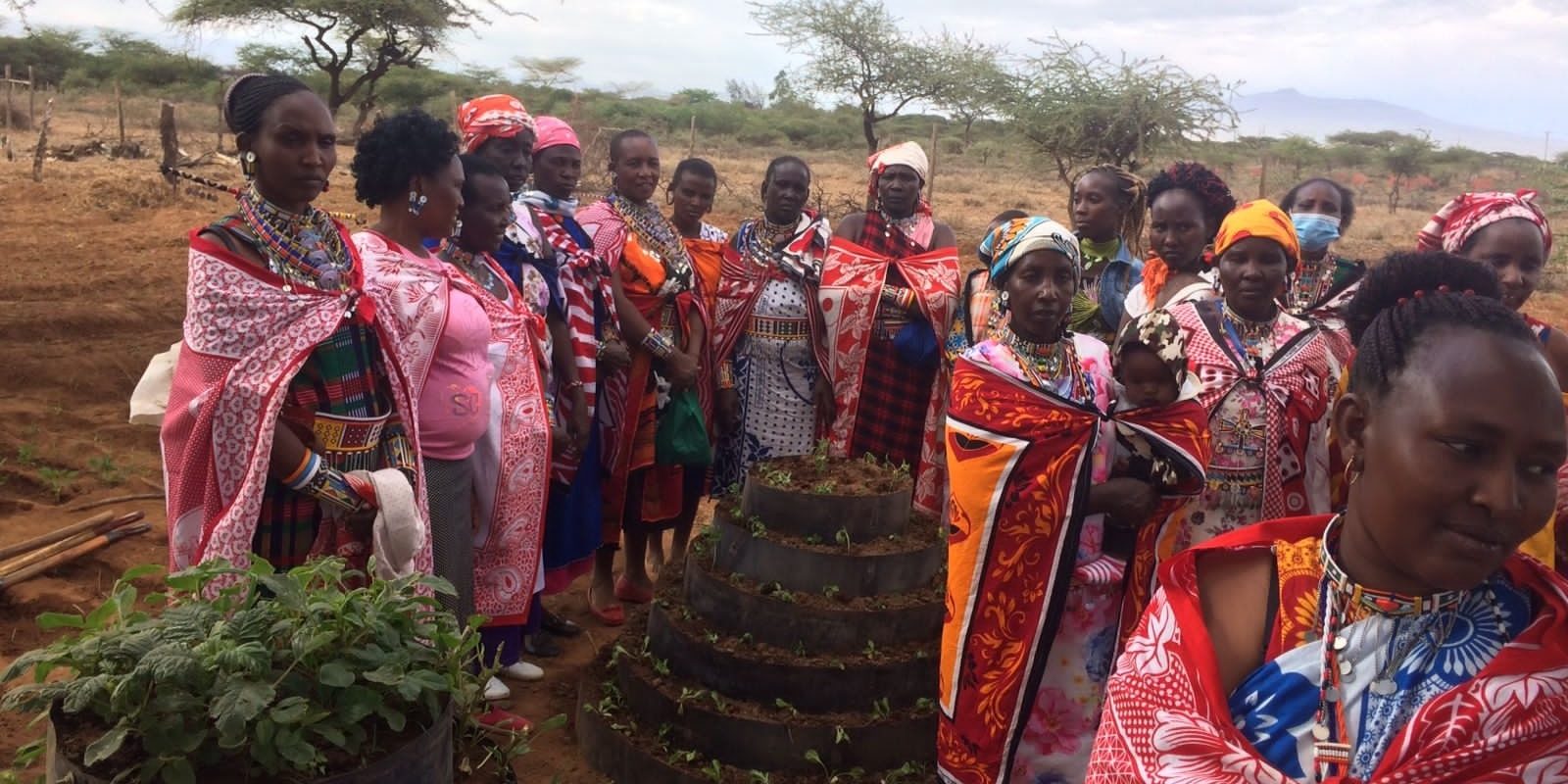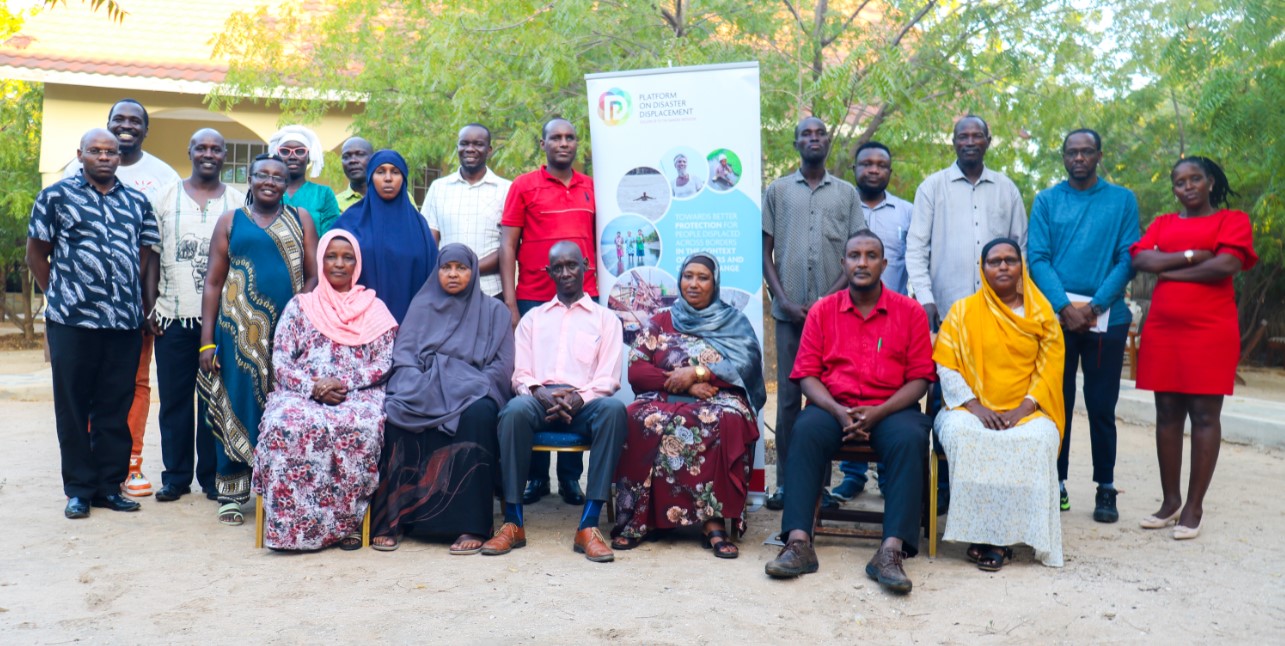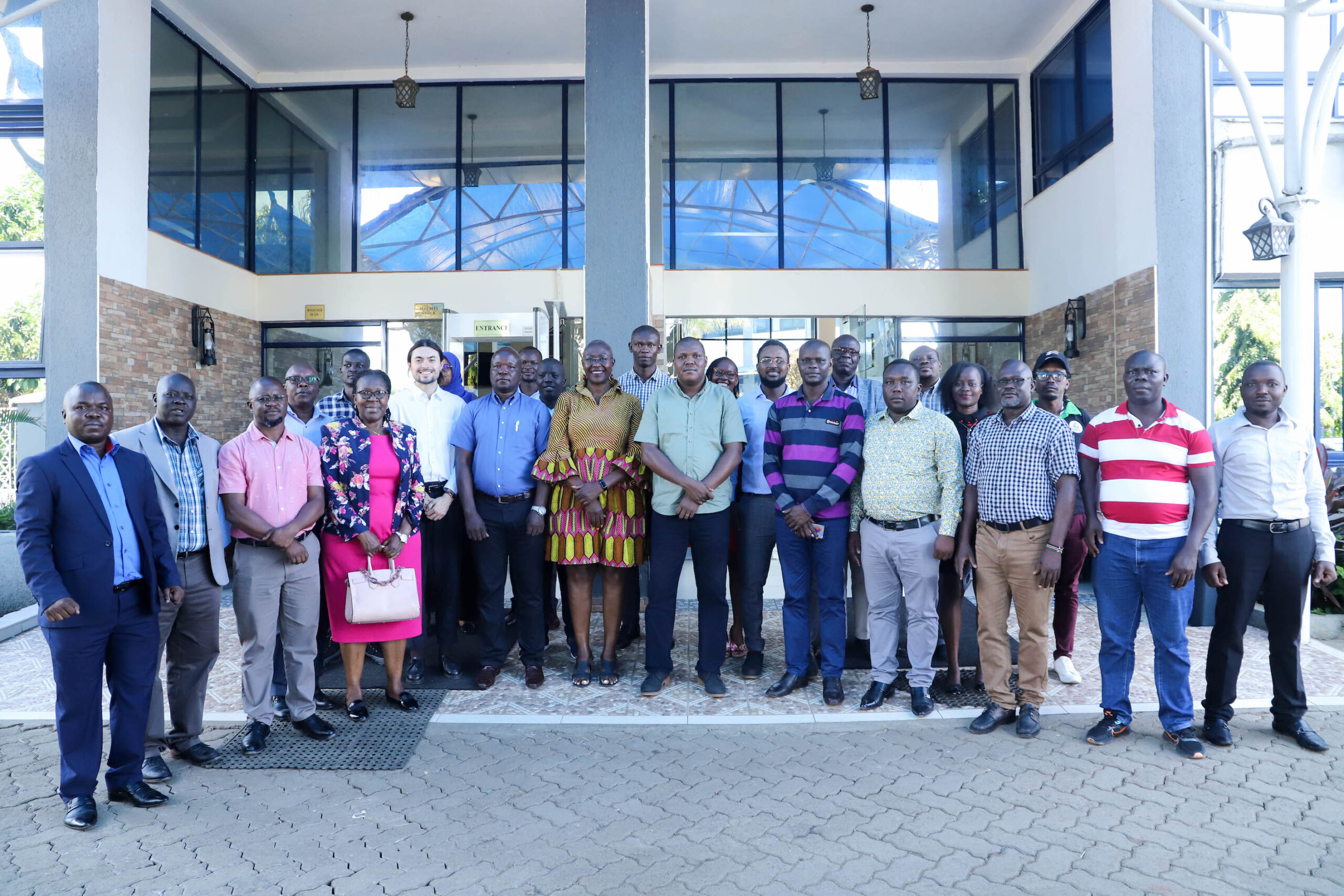Since August 2023, the Platform on Disaster Displacement (PDD) and the Global Network of Civil…
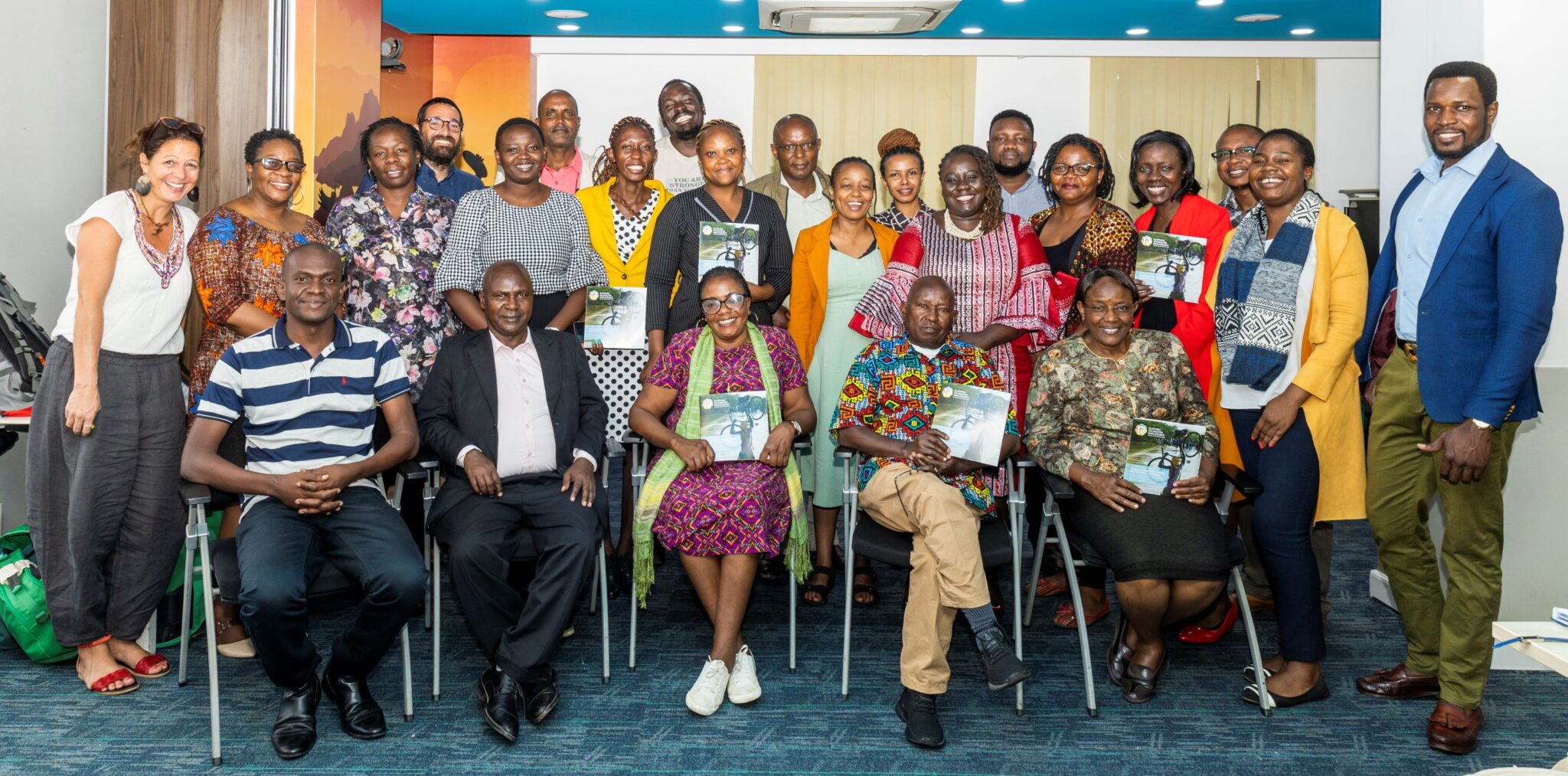
Listening to Communities in Kenya to Better Address the Needs of People on the Move in the Context of Climate Change
29 and 30 of August 2023, the Platform on Disaster Displacement (PDD) and the Global Network of Civil Society Organizations for Disaster Reduction (GNDR) invited representatives of community-based organizations from across Kenya to Nairobi to listen to their stories. Stories about climate change and the loss and damage it causes; stories about how their lives are affected, how population movements are affected; and stories about what solutions communities have deployed to tackle these challenges.
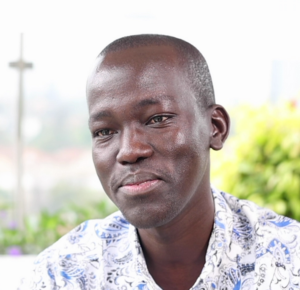 “Climate change has really exacerbated drought in the region. With drought, people lose their livelihoods, they lose their livestock. Food insecurity becomes worse and water shortages as well. More importantly, we are now experiencing the displacement of people from their communities to other communities,” shared Mr. Meshack Muli from the Climate Innovation Center in Nairobi during the consultation.
“Climate change has really exacerbated drought in the region. With drought, people lose their livelihoods, they lose their livestock. Food insecurity becomes worse and water shortages as well. More importantly, we are now experiencing the displacement of people from their communities to other communities,” shared Mr. Meshack Muli from the Climate Innovation Center in Nairobi during the consultation.
Globally, climate change has disproportionate impacts on people in vulnerable situations, with an increasing number of people forced to leave their homes because of floods, storms, droughts, and other natural hazards.
The Horn of Africa is particularly vulnerable to the impacts of droughts and floods, both of which can have drastic consequences on the lives and livelihoods of affected populations. According to the Internal Displacement Monitoring Centre (IDMC), between 2008 and 2022, flooding triggered 1.4 million displacements in Kenya alone. In 2022, the Horn of Africa experienced the worst drought on record, triggering 2.1 million displacements across Somalia, Ethiopia and Kenya. The region has seen below-average precipitations since 2020, with periods of short, intense rainfall sometimes causing flash floods.
The consultation provided an opportunity for community-based organizations to come together and discuss challenges and loss and damage related to climate change, as well as a space to share community-led solutions to reduce the risks associated with displacement and respond to the plight of people forced to leave.
“A few years ago, in a town called Githogondo, more than a hundred families were displaced by flooding, and this was actually uncommon at the time, but now people are starting to prepare better for these situations,” shared Ms. Christine Wanderi from Cullinan Edge during a video interview.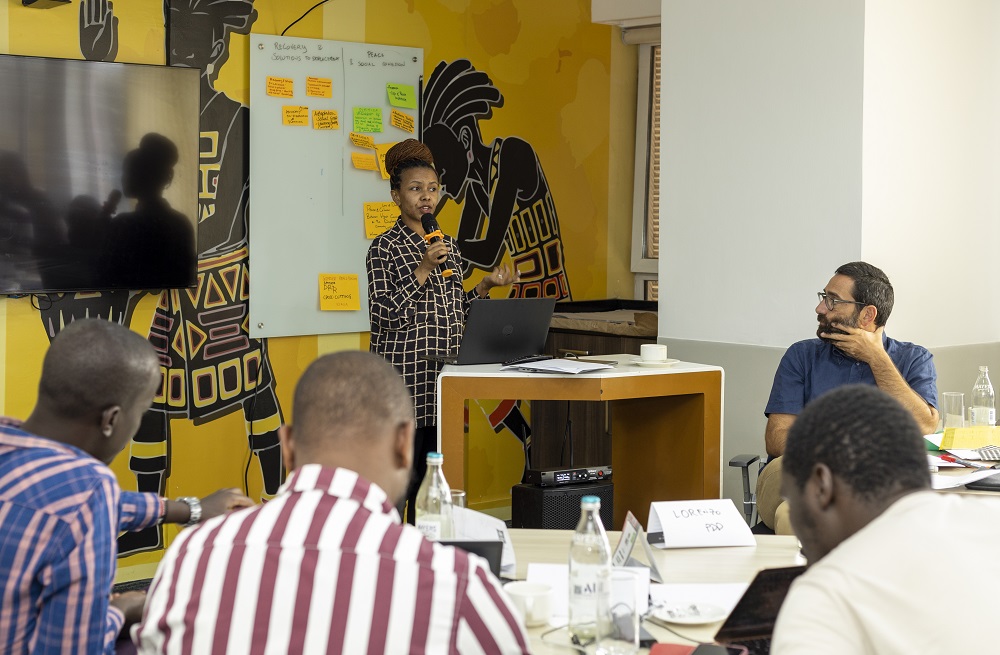
Throughout the two days, participants discussed the specific challenges pastoralists face during droughts, which sometimes force them to cross the border into Uganda or Sudan, the flooding in high-risk informal settlements and its devastating consequences on women and girls, and the strain displacement places on the delivery of basic social services, exacerbating the vulnerability of marginalized populations. Grassroots responses to these challenges include community-based disaster risk reduction and climate change adaptation efforts, preparedness activities, emergency response, and, ultimately, examples of durable solutions.
“We realized something very important: creating awareness on the effect of displacement after a fire outbreak or floods is key. What will happen next? How are you prepared? Communities affected need to be able to choose what to do next and have different solutions they can turn to when these situations happen,” insisted Ms. Ann Wanijiru from the community-based organization Mathare Legal Aid & Human Rights Advocacy.
Five key messages emerged from the consultation:
- Drought is the primary cause of displacement among pastoralist communities. In search of water and pastures, pastoralists sometimes need to travel to neighboring counties or even countries to ensure the survival and well-being of their animals.
- The displacement of residents in Nairobi’s informal settlements is predominantly driven by flooding, a challenge further exacerbated by the cyclical occurrence of the El Niño weather phenomenon. Poor infrastructure, inefficient drainage systems, unsustainable waste management and unenforced or missing housing regulations within informal settlements aggravate flood risk. Heavy rains have the potential to quickly turn these locations into disaster areas, displacing families, causing property damage, and endangering lives.
- Displacement in the context of climate change presents a multifaceted challenge, as it can increase competition for scarce resources, strain social services, and exacerbate the vulnerability of marginalized populations. The influx of displaced persons into an area brings many challenges, including heightened competition for limited resources, potential contamination of water resources and conflicts between host and displaced populations. It also creates a pressing need for essential support such as food, shelter, and healthcare, including provision of mental health support.
- Connecting with diverse organizations that provide services such as mental health and psychosocial support contributes to reducing socio-economic vulnerabilities experienced by individuals displaced in the context of the adverse effects of climate change. People’s exposure to hazards and the demand for referral to other service providers remains persistent due to the lack of viable and affordable housing options for low-income individuals, who often end up living in at-risk areas rather than relocating to safer (but more expensive) locations in places less prone to flooding.
- The availability of water for domestic use significantly alleviates climate-induced disaster displacement. Implementing water storage solutions like rainwater harvesting tanks in areas prone to drought helps reduce climate impacts, including displacements.
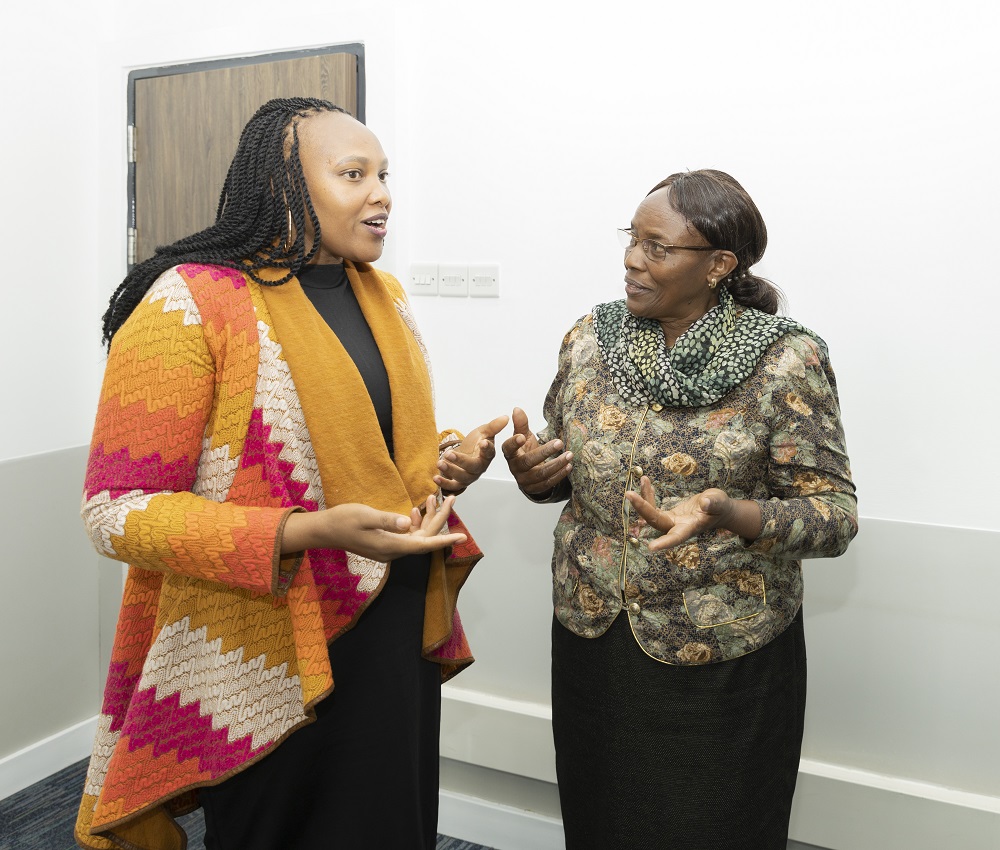 Minimizing and addressing the losses and damages incurred due to climate change – including displacement – is an urgent, global concern. Actions to prevent, prepare for, and respond to displacement require an all-of-society approach that includes working with government officials and policymakers to ensure that proper policies and planning are in place to support communities. It is also crucial to work with communities themselves, aiming to build on existing capacities and understand the risks associated with displacement, as well as the specific conditions of vulnerability of the people left behind.
Minimizing and addressing the losses and damages incurred due to climate change – including displacement – is an urgent, global concern. Actions to prevent, prepare for, and respond to displacement require an all-of-society approach that includes working with government officials and policymakers to ensure that proper policies and planning are in place to support communities. It is also crucial to work with communities themselves, aiming to build on existing capacities and understand the risks associated with displacement, as well as the specific conditions of vulnerability of the people left behind.
“I have a message for at-risk communities: you have more power and capability than you think or can imagine. So whenever disasters come, please be willing to stand strong. Stay there. Just bend but don’t break, Meshack Muli from the Climate Innovation Center in Nairobi at the end of his presentation.
“Listening to the different communities allowed us to better understand the loss and damage they are experiencing in the context of climate change, and how they shape solutions and practices in different ways to tackle their respective challenges, “ said Mr. Lorenzo Guadagno, coordinator of the Project to Avert, Minimize and Address Disaster Displacement (PAMAD) at the end of the consultation.
Over the coming months, PDD and GNDR will jointly organize consultations with representatives of community-based organizations covering Kenya’s Coast, Arid and Semi-Arid Areas, and the Lakes regions. The objective of these consultations is to document community responses to climate change and displacement, and allow for peer-learning among practitioners.
This community consultation is part of the Project to Avert, Minimize and Address Disaster Displacement (PAMAD) launched by the Platform on Disaster Displacement (PDD) in 2021 with the generous support of Norway. The project covers four countries – Fiji, Bangladesh, Kenya and Guatemala – and aims to better understand displacement in the context of losses and damages associated with climate change and support measures aimed at averting, minimizing and addressing displacement and its impacts for vulnerable people and communities.

